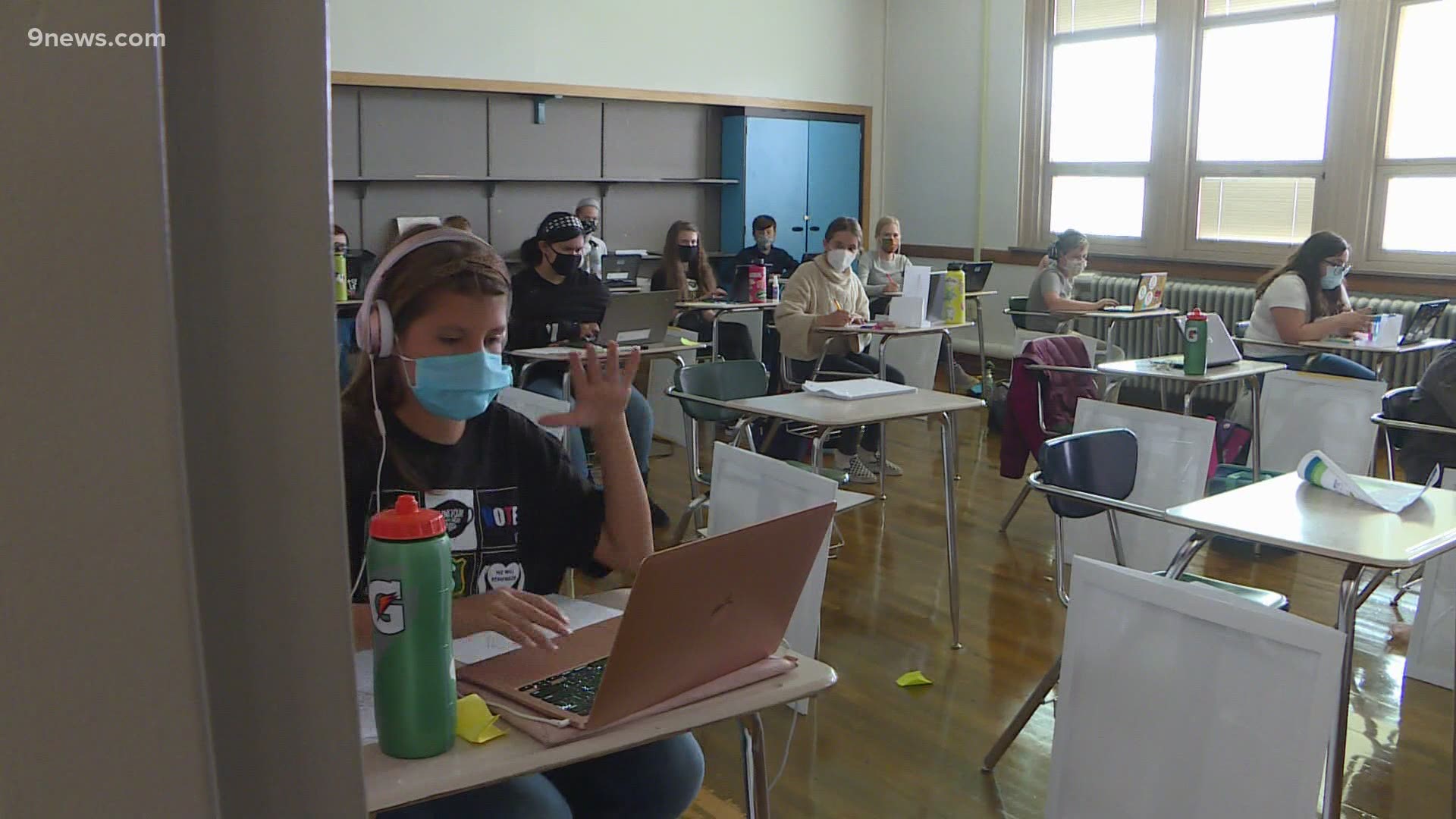DENVER — With so many people working from home over the last year, many have spent more time staring at computer screens. That's especially true for students who are remote learning. Even as students begin to return to in person learning, the computer screens don't go away.
Elsa Vossler, an eighth grader at Skinner Middle School who is still mostly doing remote learning, studied the blinking rate on a projected light source (a computer screen) and a reflected light source (a piece of paper). She titled her project "Blink-183; The Effect of Projected versus Reflected Light on Blinking Rate."
"I wanted to know if there was a stark difference, and there was," Vossler said. "The data showed that people blink 30% less when they are reading off a computer screen compared to a piece of paper."
Vossler did the experiment with the help of 10 classmates. Each student logged on to a Google Meet, one at a time, while Vossler recorded the session to go back and count the blinks.
"We had a casual conversation to find out their average blinking rate," she said. "Then they read the document for one minute on a computer screen, and then they read off of the piece of paper for one minute."
In between the computer screen and the paper document, Vossler said the participants did what's called the "20-20-20 exercise."
"You look 20 feet away from your screen for 20 seconds after you’ve used your screen for 20 minutes and it kind of refreshes and rejuvenates your eyes," said Vossler.
Vossler's project won Best in Fair and first place Behavioral & Social Sciences at the CoorsTek Denver Metro Regional Science and Engineering Fair at the University of Colorado Denver.
"It's like taking home a championship if it were your basketball team," said Christopher Martin, a science teacher at Skinner Middle School. "It's maybe perhaps even more powerful because it wasn't a team effort, it was this one person that did everything they needed to do to stand out."
Two other Skinner Middle School Students, sixth grader Samuel Calkin and eighth grader Louis Calkin, also placed in the fair.
Samuel's project won second place in Engineering and Material Sciences for his project, "Biosources Flame Retardant is a Viable Alternative to Toxic PFAS (poly/fluoro/alkyl substances)/forever chemical retardant."
Louis' project won Earth and Environmental Sciences Third Place for his project, "Extended Use of Oil Phylic Hydrophobic Sponges in Stormwater Remediation Prove Effective and Economical."
All three students went on to compete in the Colorado Science and Engineering Fair, where Vossler received an honorable mention.
SUGGESTED VIDEOS: Education stories from 9NEWS

